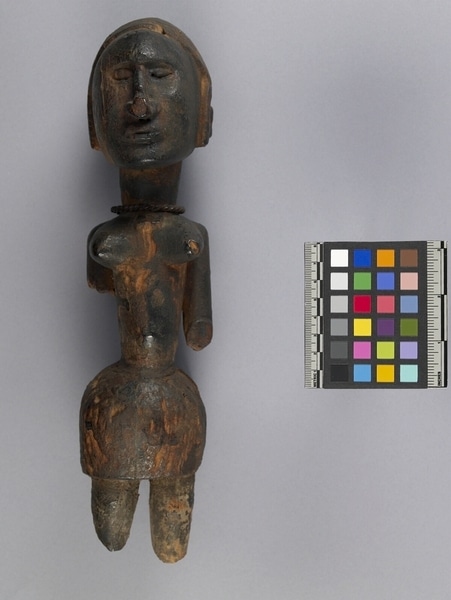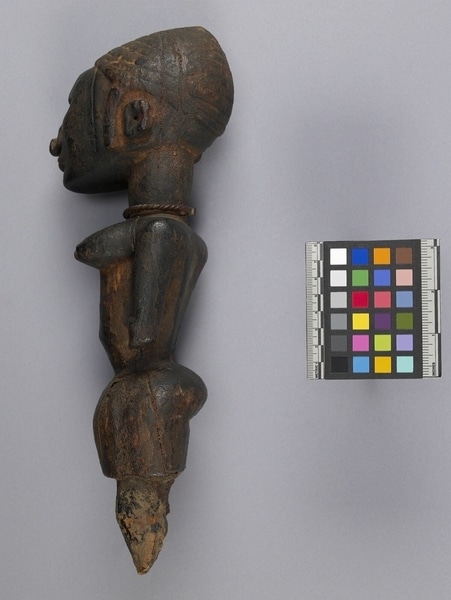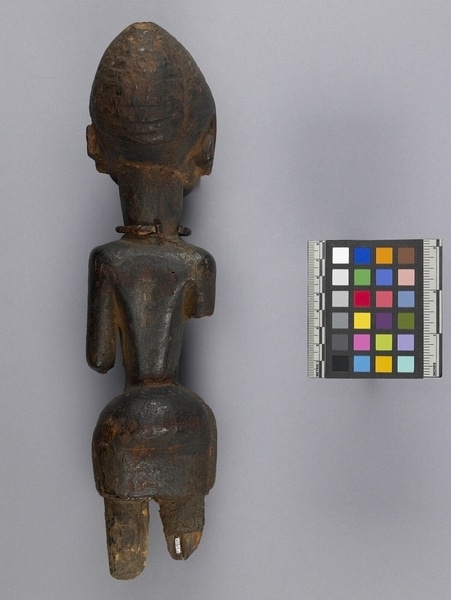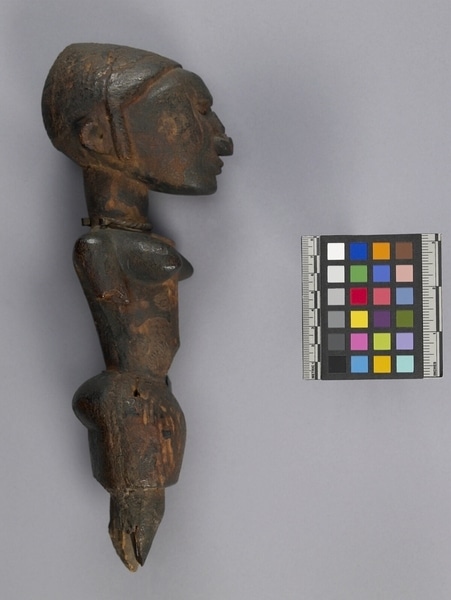Figure Item Number: 918/1 from the MOA: University of British Columbia




Description
Dark brown female figure with large cone-shaped head that extends backwards. Figure has a small neck with a band of twisted metal around it, protruding breasts, a narrow waist, and a wide lower body. Legs and arms are shortened.
History Of Use
Dogon figures are used for a variety of rituals to ask for blessings for fertility and a good harvest. Instructed by jꛑɳunɛ (Dogon healer), ailed people buy a statue that illustrates their hardship or one of the deity they wish to appease. However, with the introduction of Islam to the region, the later figures were less likely to depict deities so as not to offend. They would then represent the ailed person, a mythical character, or spirit. Many statues are carved by jéme-írũ (blacksmiths) and jꛑɳunɛ, and then sold in markets. While these statues are largely crafted for Dogon uses, they are also commercialized for sale to tourists. This type of figure, a dege dal nda (sculptures of the terrace), is taken out of storage for the funerals of rich men, and are dressed and displayed on the rooftop of the deceased; they are stored in the houses of Hogon (holy men). Due to their strict display rules, these figures are determined to be different than those placed on a vageū (family's ancestral altar).
Specific Techniques
Before chopping wood from a tree, the Dogon healer (jꛑɳunɛ) will offer cowrie shells to the tree, as an offering to Nyama (the spirit that lives in all living things). After felling the tree they carve the tree with chisels and other wood-carving tools before covering the new statues in sá oil or shea butter to create a coating to protect it.
Iconographic Meaning
The carving style for these figures varies from village to village. Ogol style is characterized by couple statues linked by arms; the female has a child or spoon on her back and the male has a quiver to represent their societal roles. Dyamsay style from the northern Bandiagara Plateau region is characterized by scarification on the bodies and some brass highlighting on jewelry items. Another style, which is more widely practiced among Dogon communities, is characterized by parted legs, brass highlights and thick black designs created with a patina. Northern and Central Dogon communities carve in Tintam and N'Duleri styles, which are frequently identifiable by figures being tall and slim, with Djennenke scarification or braided hair. Southern Dogon communities carve in Toro style which is identifiable by figures being short and ‘cubist’ in nature.
Item History
- Made in Mali
- Owned by Eric Sonner before January 10, 1984
- Received from Eric Sonner (Donor) on January 10, 1984
What
Who
- Culture
- Dogon
- Previous Owner
- Eric Sonner
- Received from
- Eric Sonner (Donor)
Where
- Holding Institution
- MOA: University of British Columbia
- Made in
- Mali
When
- Ownership Date
- before January 10, 1984
- Acquisition Date
- on January 10, 1984
Other
- Item Classes
- carvings & sculpture
- Condition
- good
- Accession Number
- 0918/0001